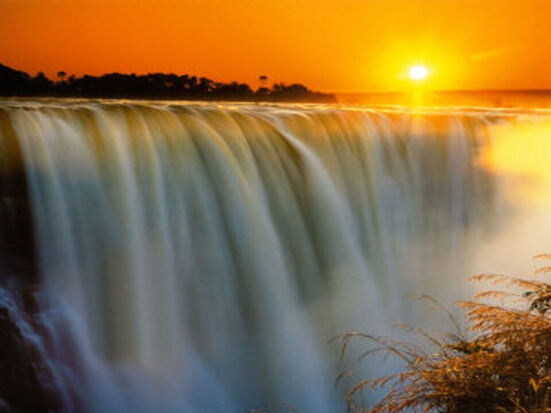
1. It is the largest waterfall in the world
Victoria Falls is neither the widest nor highest waterfall in the world, but it’s the world’s largest sheet of falling water, which solidifies this classification. It is twice the height of North America’s Niagara Falls, and is only rivalled by Iguazu Falls in South America. It is 108m tall and 1708m wide.
2. Victoria Falls is part of the Zambezi River
The Zambezi River is the fourth-largest in the African continent and spans across six different nations – its amazing journey spans an impressive 2,700 km. Along the way, you can see a range of wildlife and participate in a plethora of activities. Victoria Falls is the boundary dividing the upper and middle parts of the Zambezi.
3. It is located within two National Parks
Mosi-Oa-Tunya National Park is a UNESCO World Heritage Site that is home to part of Victoria Falls and is named so because “Mosi-Oa-Tunya” means “the smoke that thunders” – a perfect analogy for these awe-inspiring waters. Victoria Falls is also, perhaps unsurprisingly, found in Victoria Falls National Park.
4. Its English Name was chosen by David Livingstone
In 1855, British explorer and missionary David Livingstone was the first European to witness the magnificence of one of Africa’s most incredible sights, Victoria Falls. He named it for the British monarch at the time, Queen Victoria. While many places have reverted to their indigenous names, the local people had so much respect for him that it has remained unchanged.
5. Victoria Falls is one of the World’s Seven Natural Wonders
The seven natural wonders of the world are Victoria Falls, Aurora Borealis, the Harbour of Rio de Janeiro, the Grand Canyon, the Great Barrier Reef, Mount Everest, and Parícutin.
6. 500 million litres of water cascade every minute
The numbers almost seem too impossible to imagine! That’s the equivalent of 200 Olympic-sized swimming pools, to put things into perspective. It flows at a rate of 1088m3/s.


